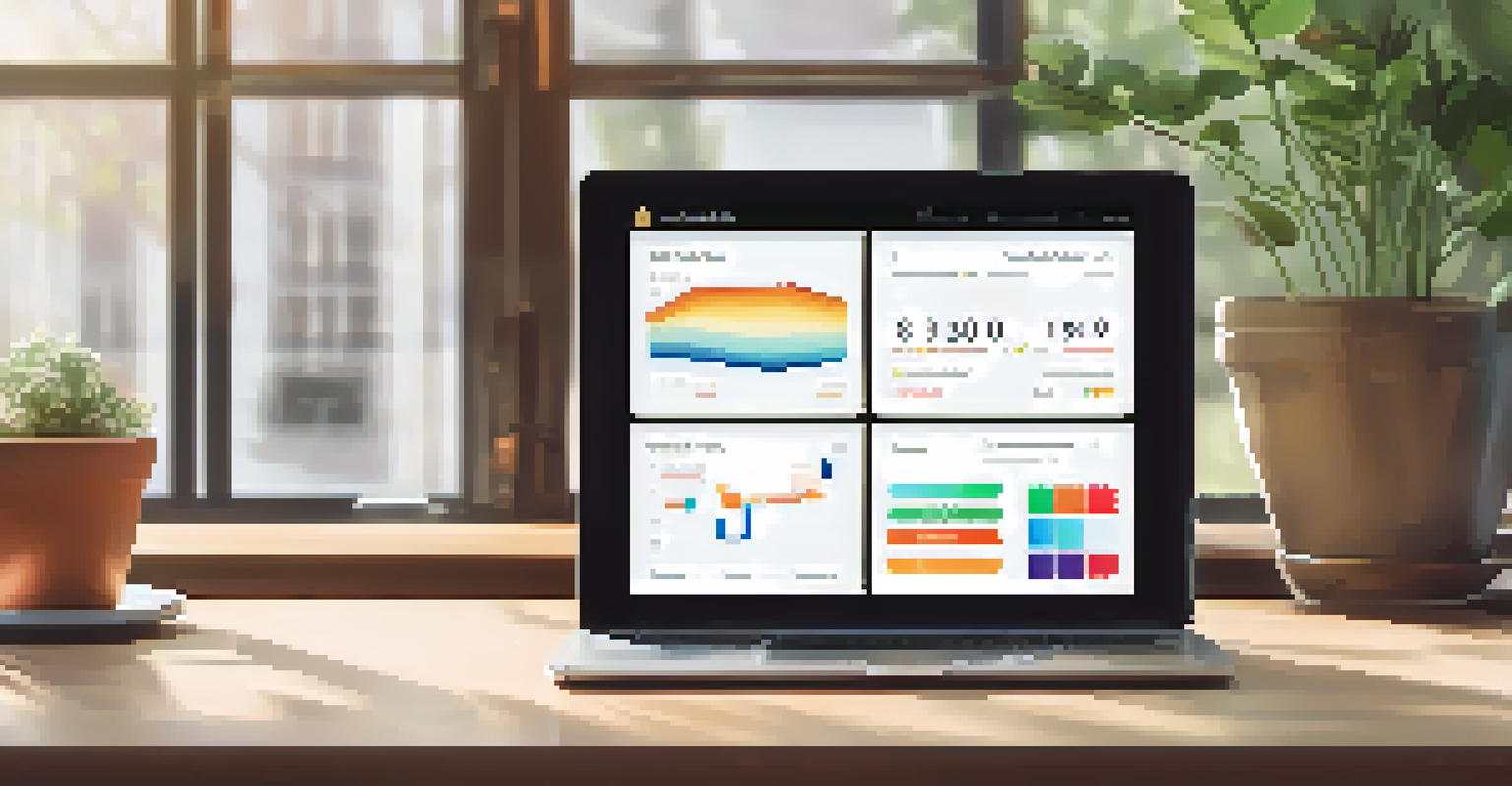Setting Up a Secure Ethereum Wallet: A Complete Guide

Understanding What an Ethereum Wallet Is
An Ethereum wallet is a digital tool that allows you to store, send, and receive Ether (ETH) and other tokens built on the Ethereum blockchain. Think of it as a virtual bank account where you can manage your cryptocurrencies securely. Unlike traditional banks, though, you have full control over your assets, which is empowering but requires responsibility.
Not your keys, not your coins.
There are various types of wallets—software, hardware, and paper wallets, each with unique features and security levels. Software wallets are convenient for daily transactions, while hardware wallets offer enhanced security for long-term storage. Understanding these options will help you choose what best fits your needs.
Ultimately, your choice of wallet determines how you interact with the Ethereum network. Just as you wouldn’t leave your physical cash lying around, it’s crucial to understand the importance of securing your digital assets effectively.
Choosing the Right Type of Wallet for Your Needs
Selecting the right Ethereum wallet is akin to finding the perfect pair of shoes; it should fit your lifestyle and needs. If you frequently trade or use ETH for transactions, a software wallet might suit you best for its convenience. However, if you’re storing a significant amount of Ether long-term, a hardware wallet is more advisable due to its superior security features.

Consider your level of experience with cryptocurrencies as well. Beginners might appreciate the user-friendly interfaces of software wallets, while seasoned users may prefer the advanced features of hardware wallets. Always weigh the pros and cons of each option based on your specific use case.
Choose Your Ethereum Wallet Wisely
Selecting the right Ethereum wallet—software or hardware—depends on your trading habits and security needs.
Ultimately, the right wallet should provide a balance between accessibility and security. Taking the time to evaluate your needs will help ensure that you’re not just well-equipped but also confident in your Ethereum transactions.
Downloading and Installing a Software Wallet
Once you've decided to go the software wallet route, the first step is to choose a reputable wallet provider. Popular choices include MetaMask, Trust Wallet, and Coinbase Wallet. Before downloading, ensure you’re on the official website to avoid phishing scams—always double-check the URL.
The best way to predict the future is to create it.
After downloading, the installation process is typically straightforward. You'll create a new wallet by following the prompts, which often include generating and confirming a secure password. This password will be essential for accessing your wallet, so make sure it's memorable yet complex enough to keep intruders at bay.
Once installed, many wallets will prompt you to back up your recovery phrase, which is a series of words that can restore your wallet if you lose access. Treat this phrase like a treasure map; if someone else gets it, they can access your funds. Store it securely, preferably offline.
Setting Up a Hardware Wallet for Enhanced Security
If you opt for a hardware wallet, the first step is to purchase a reputable device, such as Ledger or Trezor. These devices store your private keys offline, making them much less susceptible to hacking attempts. When buying, always purchase directly from the manufacturer to avoid counterfeit products.
After receiving your hardware wallet, connect it to your computer and follow the setup instructions. This process usually involves creating a PIN and backing up your recovery seed phrase, just like with a software wallet. Again, it's crucial to keep this information secure and private.
Secure Your Wallet with Best Practices
Implementing security measures like two-factor authentication and regular updates is crucial to protect your digital assets.
Once set up, you can manage your Ethereum assets directly through the wallet interface or connect it to compatible software wallets for easier transactions. This combination of hardware and software can provide a robust security solution for your cryptocurrencies.
Securing Your Wallet: Best Practices to Follow
Securing your wallet goes beyond just setting it up; it requires ongoing vigilance. One of the most crucial practices is enabling two-factor authentication (2FA) if your wallet supports it. This adds an extra layer of security, requiring a second form of verification before you can access your funds.
Regularly updating your wallet software and device firmware is also essential, as updates often include security patches and new features. Just like keeping your phone or computer up-to-date, your wallet should always run the latest version to fend off new threats.
Lastly, always be cautious about sharing information online. Scammers often pose as legitimate services to gain access to your wallet. By practicing good security hygiene—like not sharing your private keys or recovery phrases—you can significantly reduce your risk of losing your assets.
Understanding Gas Fees and Their Impact on Transactions
When you use your Ethereum wallet to send transactions, you’ll encounter something called gas fees. These fees compensate miners for processing transactions on the Ethereum network. Think of gas fees as the tolls you pay to use a highway; they can fluctuate based on network congestion and the speed at which you want your transaction processed.
Understanding how to set these fees can help you save money. Most wallets automatically suggest a gas fee based on current network conditions, but you can often adjust it manually. If you're not in a rush, setting a lower gas fee during off-peak times can save you some ETH.
Understand Gas Fees for Transactions
Gas fees are essential for processing transactions on the Ethereum network, and managing them can save you money.
Keeping an eye on gas prices can enhance your wallet management experience. Various websites and tools can help you track current gas prices, allowing you to time your transactions better. This knowledge is especially valuable during busy trading hours, when gas fees can skyrocket.
Recovering Your Wallet: What to Do If You Lose Access
Losing access to your wallet can be a daunting experience, but having a recovery plan can make all the difference. If you have your recovery phrase backed up securely, you can restore your wallet on any compatible software or hardware wallet. This is why treating your recovery phrase like a secret treasure is so crucial.
If you lose your recovery phrase, however, recovering your wallet becomes nearly impossible. This highlights the importance of keeping multiple backups in different secure locations. Consider writing it down and storing it in a safe or a safety deposit box.

In the unfortunate event that you suspect your wallet has been compromised, act quickly. Move your funds to a new wallet immediately using your recovery phrase. This proactive approach can help you safeguard your assets and minimize potential losses.